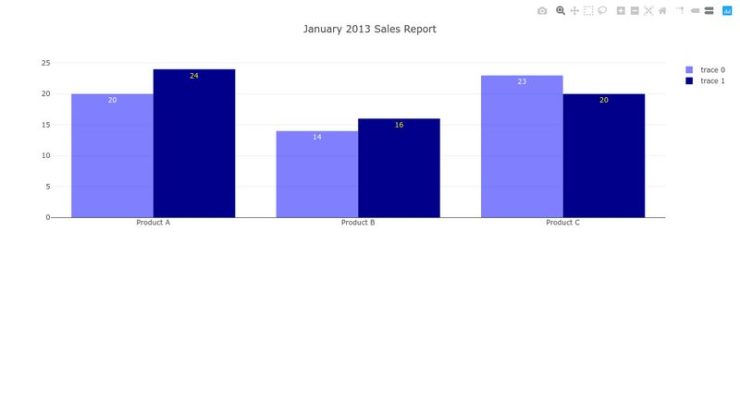In the realm of education, the issue of test takers who fake good casts a shadow over the integrity of assessment. This phenomenon, where individuals engage in deceptive practices to inflate their test scores, has become a pervasive concern, raising questions about fairness, equity, and the validity of testing systems.
From impersonation and collusion to outright cheating, the methods employed by test takers to deceive are as varied as the testing scenarios themselves. The prevalence of such behaviors, spanning different educational settings and demographics, demands our attention.
Types of Faking Behavior

Faking good in testing refers to deceptive strategies employed by test takers to misrepresent their actual knowledge or skills. This can manifest in various forms, including impersonation, collusion, and cheating.
Impersonation
Impersonation involves an individual taking the place of another authorized test taker. This can be achieved through various means, such as using forged identification documents or having someone else sit in for the actual test taker. Impersonation is a serious offense that can result in severe consequences, including disqualification from the exam and legal action.
Collusion, Test takers who fake good
Collusion occurs when two or more individuals work together to gain an unfair advantage on a test. This can involve sharing answers, discussing test content, or providing unauthorized assistance during the exam. Collusion undermines the integrity of the testing process and can lead to inaccurate assessments of individual abilities.
Cheating
Cheating encompasses a wide range of dishonest practices used to obtain an undeserved advantage on a test. Common methods of cheating include using unauthorized materials, such as notes or electronic devices, or altering answer sheets to fabricate higher scores. Cheating is a serious academic offense that can result in severe penalties, including failing grades, suspension, or even expulsion.
Motivations for Faking

Test takers resort to faking good for various reasons, including:
- Pressure to Succeed:High-stakes testing can create intense pressure on individuals to perform well, leading them to engage in faking behavior to meet expectations.
- Fear of Failure:Test takers may fake good to avoid the negative consequences associated with failure, such as embarrassment, disapproval, or punishment.
- External Rewards:Some test takers may fake good to obtain rewards or benefits, such as scholarships, promotions, or admission to prestigious institutions.
Psychological and social factors also contribute to the decision to fake, including:
- Self-Esteem:Test takers with low self-esteem may fake good to enhance their self-perception and gain validation.
- Social Comparison:Individuals may engage in faking behavior to appear more competent than their peers or to avoid negative comparisons.
- Test Anxiety:High levels of test anxiety can impair cognitive functioning, leading test takers to resort to faking good as a coping mechanism.
Faking behavior has severe consequences for individuals and the integrity of testing systems. For individuals, it can lead to:
- Distorted Self-Assessment:Faking good can prevent test takers from accurately assessing their strengths and weaknesses.
- Increased Stress and Anxiety:The pressure to maintain a false performance can lead to increased stress and anxiety.
- Negative Impact on Learning:Faking good can undermine the learning process by reducing the incentive to engage in meaningful learning.
For testing systems, faking behavior can:
- Compromise Validity:Faking good can invalidate test results, making them less reliable and accurate.
- Undermine Fairness:It creates an unfair advantage for test takers who engage in faking behavior.
- Damage Reputation:Testing systems that are perceived as susceptible to faking behavior can lose credibility and trust.
Detection and Prevention: Test Takers Who Fake Good

Detecting faking behavior is crucial to ensure the integrity of testing. Statistical analysis, behavioral observation, and forensic techniques are commonly employed to identify fakers.
For test takers who fake good, it’s all about creating the illusion of competence. They may cram at the last minute, memorize formulas without understanding, or even resort to cheating. But what if there was a way to actually learn the material and ace the test? Check out this ap calc bc unit 9 review to get a head start on your studies.
With a solid understanding of the concepts, you’ll be able to confidently tackle any test question and prove your true abilities.
Statistical Analysis
Statistical analysis involves examining response patterns for anomalies that deviate from expected norms. For instance, fakers may exhibit overly consistent responses, extreme scores, or random guessing patterns that are statistically improbable.
Behavioral Observation
Behavioral observation involves observing test takers’ demeanor, body language, and interactions with the testing environment. Fakers may exhibit signs of anxiety, fidgeting, or unusual eye movements that indicate discomfort or attempts to conceal deception.
Forensic Techniques
Forensic techniques, such as handwriting analysis and fingerprint comparison, can help identify cases of impersonation or tampering with test materials. These techniques provide physical evidence that can be used to corroborate or refute claims of faking behavior.
Challenges and Limitations
Despite these methods, identifying fakers remains challenging due to:
- Sophisticated faking strategies
- Individual differences in response patterns
- Lack of universal criteria for defining faking behavior
Recommendations for Improvement
To improve detection and prevention strategies, the following recommendations are proposed:
- Develop more sophisticated statistical models to detect subtle faking patterns
- Train examiners to recognize behavioral cues associated with faking
- Implement strict security measures to prevent impersonation and tampering
Ethical Considerations

Faking behavior in testing situations raises ethical concerns that extend beyond the individual test taker. It undermines the fairness and equity of the testing process and compromises the validity of the results.
Responsibilities of Test Administrators
Test administrators have a primary responsibility to maintain the integrity of the testing environment and ensure that all test takers have equal opportunities to demonstrate their abilities. This includes implementing measures to prevent and detect faking behavior, such as:
- Providing clear instructions and expectations to test takers
- Monitoring test takers during the exam
- Investigating suspected cases of faking
Responsibilities of Educators
Educators play a crucial role in shaping students’ attitudes towards ethical conduct in testing situations. They should:
- Educate students about the importance of test integrity
- Discuss the consequences of faking behavior
- Create a classroom environment that fosters honesty and respect
Responsibilities of Students
Students have a fundamental responsibility to act ethically in testing situations. They should:
- Prepare adequately for the test
- Follow all test instructions
- Refrain from engaging in any form of faking behavior
Consequences of Violating Testing Integrity
Violating testing integrity can have serious consequences for all parties involved. Test takers who engage in faking behavior may face:
- Invalidated test results
- Disciplinary action from their educational institution
- Damage to their reputation and credibility
Test administrators and educators who fail to prevent or address faking behavior may also face consequences, such as:
- Loss of confidence in the testing process
- Damage to their professional reputation
- Legal liability
Ethical conduct in testing situations is essential for maintaining the fairness, equity, and validity of the testing process. All parties involved have a responsibility to uphold these principles and ensure that test results accurately reflect the abilities of the test takers.
Alternative Assessment Methods

Traditional high-stakes testing can create an incentive for students to engage in faking behavior. Alternative assessment methods, such as performance-based tasks, portfolios, and self-assessment, may reduce this incentive by providing students with more authentic and meaningful ways to demonstrate their learning.
Performance-Based Tasks
- Provide students with real-world or simulated scenarios that require them to apply their knowledge and skills.
- Allow students to demonstrate their abilities in a practical and hands-on manner.
- Reduce the reliance on memorization and recall, which can be susceptible to faking.
Portfolios
- Collections of student work that showcase their progress and development over time.
- Allow students to reflect on their learning and identify areas for improvement.
- Provide a more comprehensive assessment of student learning than a single test.
Self-Assessment
- Students evaluate their own work and provide feedback on their strengths and weaknesses.
- Promotes student self-awareness and metacognition.
- Can help students identify areas where they need additional support.
Alternative assessment methods can not only reduce the incentive for faking but also promote authentic learning by:
- Encouraging students to engage with the material in a meaningful way.
- Providing students with opportunities to apply their knowledge and skills to real-world situations.
- Fostering student self-reflection and metacognition.
By incorporating alternative assessment methods into the curriculum, educators can create a more holistic and authentic assessment system that reduces the reliance on high-stakes testing and discourages faking behavior.
Quick FAQs
What are the most common methods used by test takers to fake good?
Impersonation, collusion, and cheating are among the most prevalent methods employed by test takers to deceive.
Why do test takers resort to faking good?
Pressure to succeed, fear of failure, and external rewards are some of the reasons why individuals engage in deceptive practices.
How can we detect and prevent test takers from faking good?
Statistical analysis, behavioral observation, and forensic techniques are used to detect faking behavior. Prevention strategies include fostering academic honesty and implementing alternative assessment methods.

